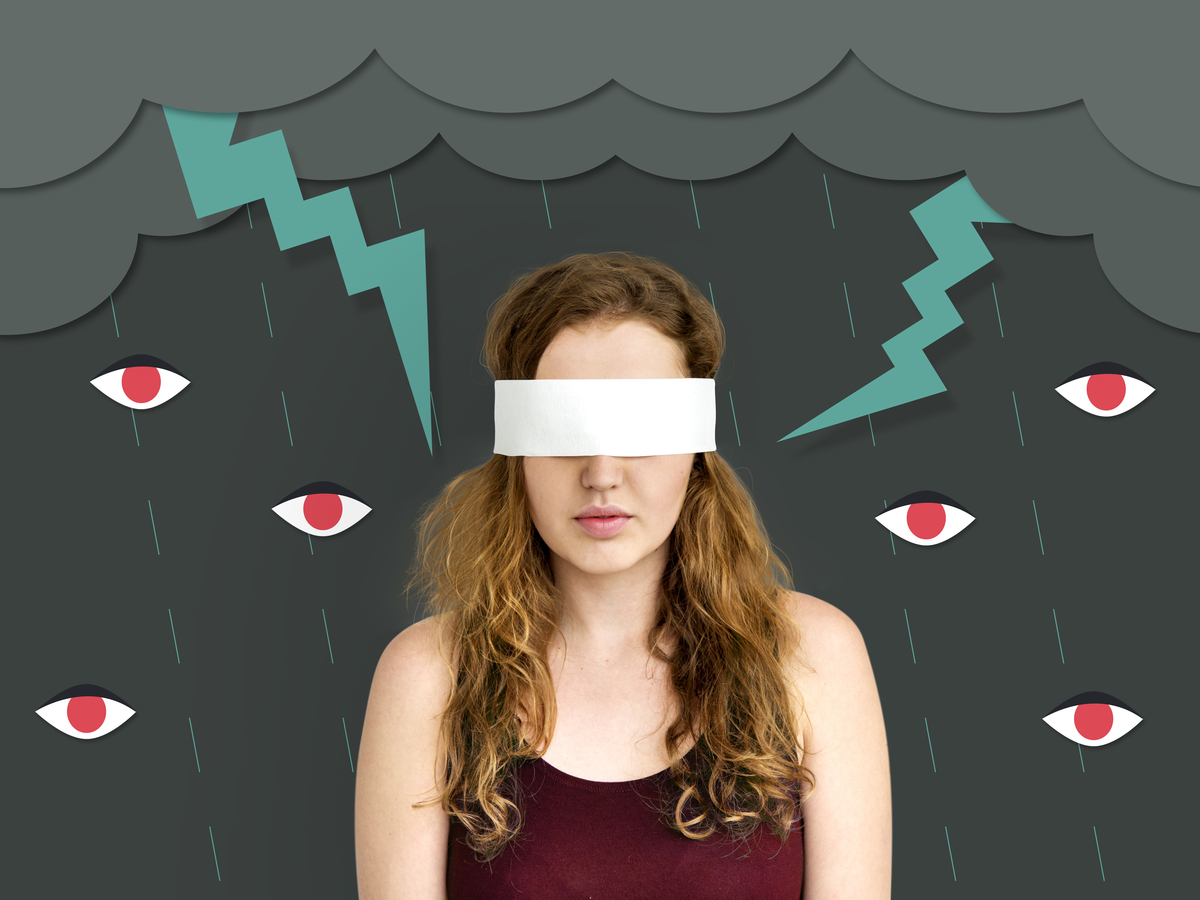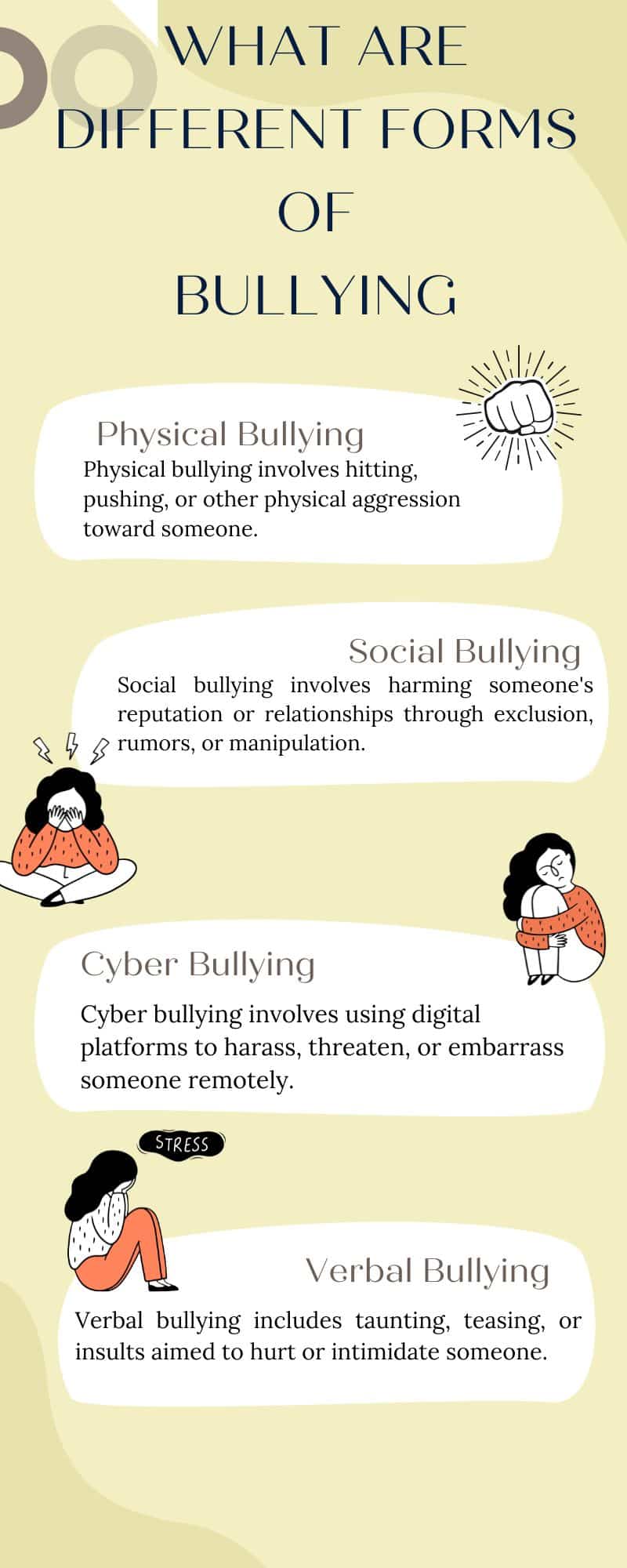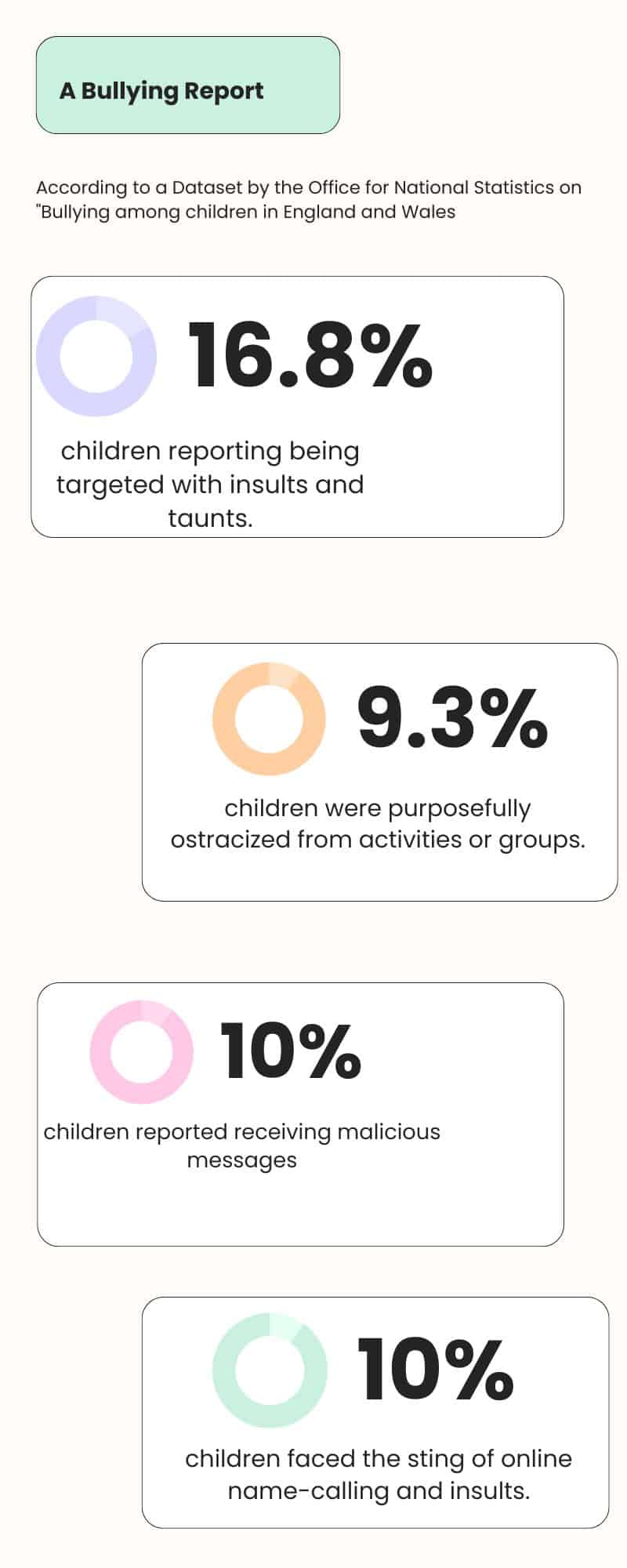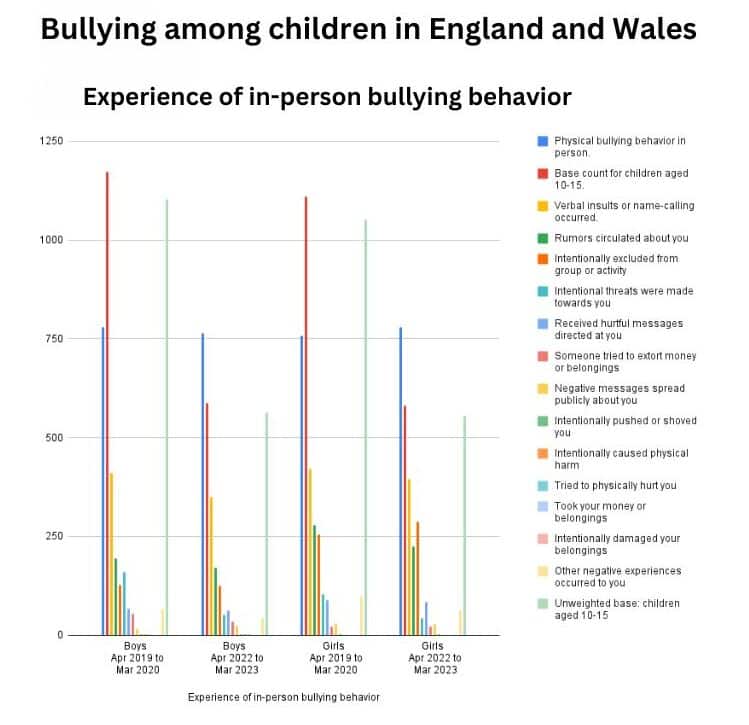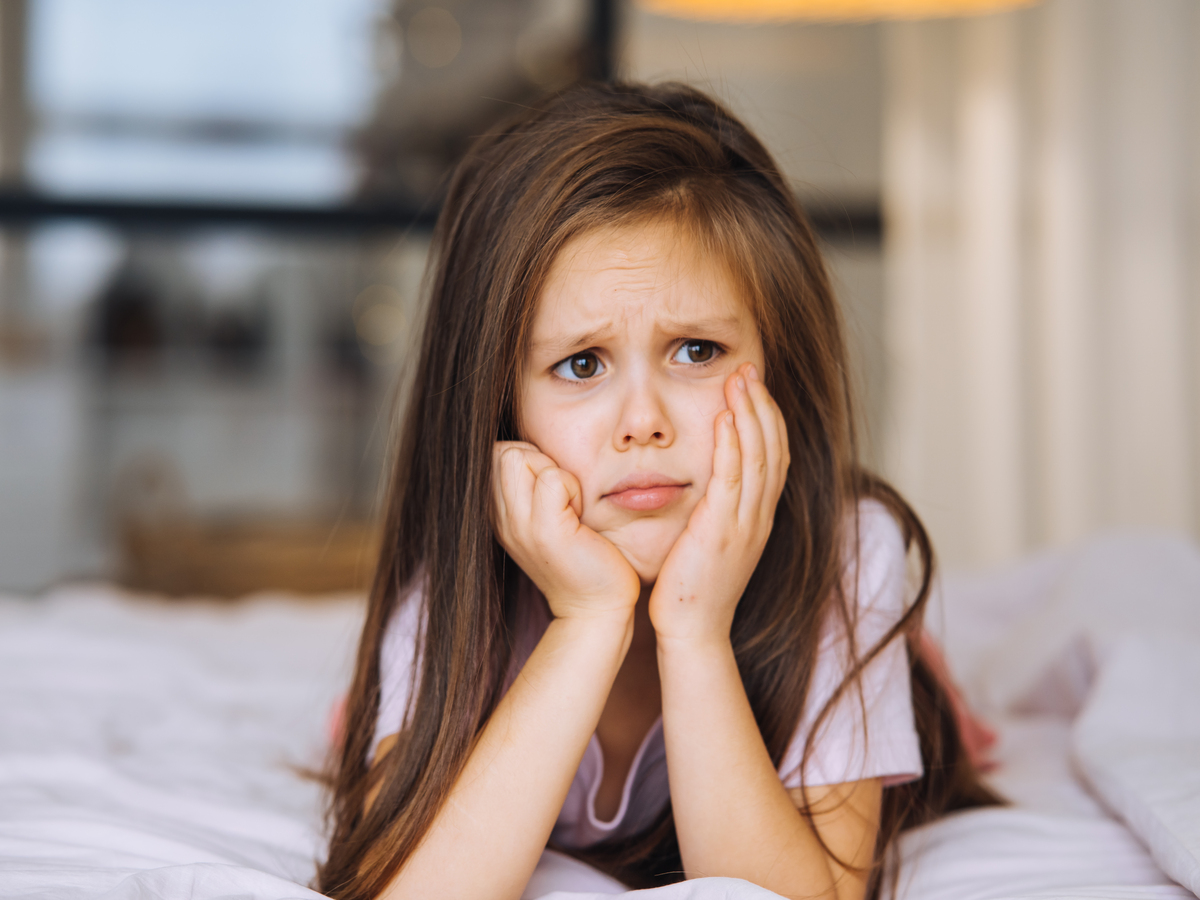How does bullying affect child development? This is a common question with a difficult answer. Important factors to take into account are the type and intensity of bullying.
The duration of the mistreatment is crucial since it could provide insight into the reasons behind a person’s potential targeting by a peer group. A child’s physical health, social growth, and mental wellbeing can all be negatively impacted by bullying. We must be aware of these risks so that our children can avoid them as well before we can teach them about bullying prevention and safety!
What is Bullying?
A worldwide problem that affects millions of people is bullying among schoolchildren. It can manifest in a variety of ways, including verbal and physical abuse as well as cyberbullying.
“Bullying is a repetitive behaviour that seeks to intentionally harm, intimidate, or control another person” Salmivalli et al. (2011). It can be physical, verbal, social, or emotional and can occur in person or online (cyber bullying). Common tactics include name-calling, spreading rumours, physical violence, social exclusion, and threats.
While bullying can be motivated by various factors, power imbalances often play a significant role. Bullies may target individuals perceived as different, weaker, or less popular [Salmivalli et al., 2011].”
What are the key risk factors categorised by their source?
Bullying is a prevalent issue with serious consequences. While anyone can be a target, certain factors can increase a person’s likelihood of being bullied or becoming a bully themselves. Here’s a breakdown of key risk factors categorised by their source:
Individual Factors:
- Aggressiveness: Individuals who struggle with managing anger or frustration are more likely to engage in bullying behaviour.
- Impulsivity: Acting without thinking through consequences can lead to impulsive aggression, a common trait in bullies.
- Social Isolation: Students who have difficulty making friends or feel excluded may be more vulnerable to bullying and less likely to have a support system.
- Low Self-Esteem: Individuals with low self-esteem may be more susceptible to peer pressure and manipulation, making them vulnerable to bullying tactics.
Family Factors:
- Dysfunctional Home Environment: Chaotic or abusive home environments can lead to aggression and difficulty regulating emotions, behaviours that can manifest as bullying at school.
- Witnessing Violence: Exposure to violence in the home can desensitise children to aggression and make them more likely to use violence to resolve conflict.
- Lack of Parental Supervision: Without proper guidance and clear boundaries set by parents, children may be more likely to engage in risky behaviours, including bullying.
School Factors:
- Lack of Supervision: Un-monitored areas and situations in schools create opportunities for bullying to occur.
- Tolerance for Bullying: Schools that fail to address bullying incidents effectively send a message that it’s acceptable behaviour, leading to a higher prevalence.
- Negative School Climate: Schools with a climate characterised by fear, disrespect, or competition can foster bullying behaviour.
The Social and Emotional Effects of Bullying
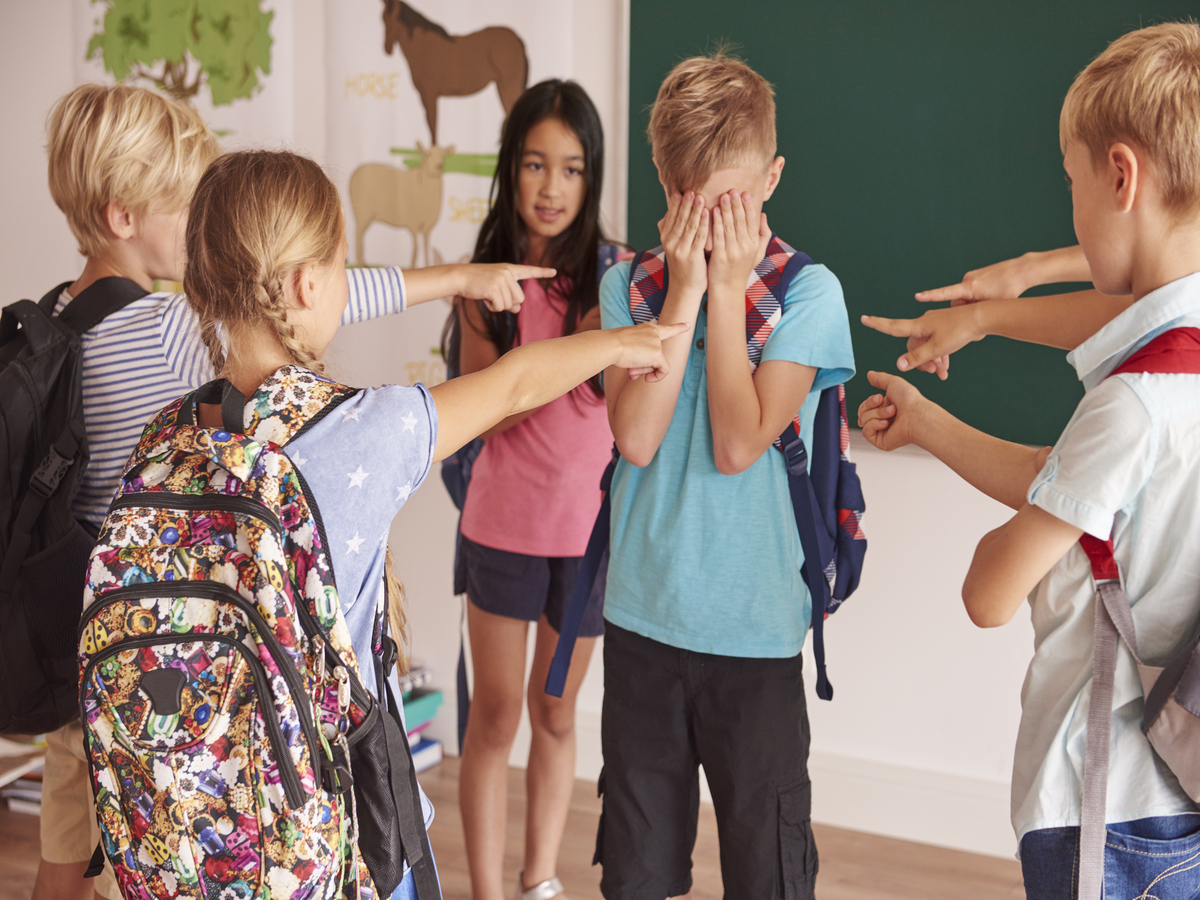
How does bullying impact both victims and bullies?
Bullying hurts everyone involved, both the victims and the bullies. Victims might feel many difficult emotions like feeling alone, helpless, angry, or scared. This often leads to serious issues such as anxiety, depression, and low self-esteem. Hurtful words like ‘loser,’ ‘fatty,’ or ‘stupid’ can make them feel really bad about themselves and unwelcome among friends.
Victims might also struggle in school, miss out on fun activities with friends, or start harming themselves or using drugs to deal with their pain. On the other hand, bullies might get into fights, damage things, or even drop out of school because of their behaviour.
This situation shows why it’s so important to have strong education and awareness programs about bullying. By understanding more about bullying and its effects, everyone can help stop it. This way, we can build a community that not only spots bullying but also helps everyone involved to get better and move on from these tough experiences.
Long-Term Effects
In some cases, the effects of bullying can last into adulthood. Bullied adults are more likely to suffer anxiety, depression, and low self-esteem. They may also have difficulty trusting people and forming healthy relationships.
Furthermore, the effects of bullying can be particularly damaging to children with special needs or who identify as LGBTQ+. These children often face additional challenges that make them more vulnerable to bullying. For example, they may feel isolated and different from their peers, and bullying can further exacerbate them.
The Physical Effects
Bullying can also take a toll on victims’ physical health. Headaches, stomachaches, and sleeping problems are all common among bullied children. Victims may also suffer from ulcers, high blood pressure, and fatigue. In extreme cases, bullying can lead to more severe health problems like heart disease.
Children who are harassed frequently complain of stomachaches and headaches. Bullying may increase an individual’s risk of acquiring additional medical problems, such as eczema. All skin conditions, stomach issues, and heart conditions sensitive to stress worsen when a child experiences bullying.
The Effect on Family
When somebody bullies a child, the entire family may suffer. Parents often feel helpless and confused when their child comes home from school with bruises or cuts. They may feel guilty, thinking they could have done something to prevent the bullying. Siblings may also be affected; they may worry about their safety or feel they need to protect their brother or sister from bullies.
The best way to support a victim child is to listen and be there for them. Talking to their teacher or school counselor about the situation is also essential. Finally, parents should encourage their children to be assertive and stand up for themselves.
The Academic Effects
Bullying has a negative influence on both academic and non-academic areas in children. Children who are harassed frequently fall behind in their studies. They may also have difficulty concentrating and paying attention in class. As a result, their grades may suffer. Additionally, bullying can lead to social isolation, which can further impact a child’s academic performance.
Bullied youngsters may also avoid attending school or taking classes to avoid being taunted. Furthermore, not studying can lead to poor grades. Similarly, when exam results start declining, the stress the bullied child is already feeling increases.
The Impact on Society
Bullying is a severe problem that can have long-lasting effects on both the victim and the bully. It can damage relationships, lower self-esteem, and cause physical and emotional pain. Additionally, bullying can lead to social isolation and academic problems. If left unchecked, bullying can harm both the individual and society as a whole.
The effects of bullying are far-reaching and can negatively impact victims’ mental and physical health. Victims may experience anxiety, depression, low self-esteem, and suicidal ideation (Peng, Li, Li, Jia, Wang, & Xiao, Year). Bullying can also lead to academic difficulties, school absenteeism, and problems with social relationships [Hinduja & Patchin, 2010].
A Report About Bullying: Understanding the Problem and Finding Solutions
Bullying is a common problem that can have terrible effects on its targets. It occurs in places other than actual buildings; it happens in offices, schools, and increasingly online. This paper tries to provide light on the several forms bullying can take, the effects it can have on people and communities, and the actions that can be taken to stop and deal with it.
Data taken from: Office for National Statistics
What is the relationship between Bullying and Depression?
Bullying is a form of aggressive doings in which one child intentionally harms another child, either physically or emotionally. Although it can occur at any age, bullying is most common during elementary and middle school years. According to the Centers for Disease Control and Prevention (CDC), approximately 21 percent of students in grades 6-12 reported being bullied during the 2014-2015 school year.
There is a solid connection between bullying and depression. Bullied children are more likely to undergo symptoms of depression, such as sadness, anxiety, and low self-esteem. They may also have sleeping disorders, lose interest in activities they used to enjoy, and struggle in school. In some cases, bullying can lead to suicidal thoughts or behavior. According to the CDC, about 1 in 4 children who are bullied say that they have seriously considered suicide.
If somebody is bullying your child, it is essential to take action. Talk to your child’s teacher or school counsellor about what is happening. Help your child learn ways to stand up to bullying, such as walking away or talking to an adult. You can also contact your local law enforcement agency if the bullying includes threats of violence or property damage. Taking action can help your child feel safe and supported while conveying that you will not tolerate bullying.
How to Help
If your child is being bullied, it’s crucial to intervene and seek support immediately. Reach out to your child’s teacher or school counsellor, who can offer direct assistance or connect you with additional resources.
Bullying impacts children of all ages differently, and it’s important to distinguish it from mere self-criticism. During such a difficult period, your child needs your unwavering support. Instead of fixating on past events or questioning your parental decisions, focus on being a positive outlet for your child to express their feelings and concerns.
Encourage your child to forgive and move past the bullying without seeking revenge, which does not aid in emotional recovery. Teach them to let go of the incident and concentrate on aspects of their life they can control. This approach not only helps in healing but also empowers them to rise above the situation.
Addressing Bullying
Combating bullying requires a multi-pronged approach that involves creating safe and supportive environments, fostering open communication, and implementing clear anti-bullying policies.
Schools:
- Prevention Programs: Implementing programs that teach empathy, respect, and conflict resolution skills can significantly reduce bullying incidents [Menesini et al., 2003].
- Bystander Intervention Training: Encouraging bystanders to intervene when they witness bullying can help to stop it from happening [Gini & Bystander Revolution, 2014].
- Reporting Systems: Establishing accessible and reliable reporting mechanisms for victims and bystanders is crucial.
What if your Child is Bullying
If you notice your child is bullying others, it is essential to address the issue head-on. Talk to your child about why bullying is wrong and how it can impact others. Please help them to understand how their words and actions can hurt others. Some parents are more inclined to listen when you speak directly with them about the problem. Brainstorming solutions together may help resolve this issue faster!
Above all, it is essential to be there for your child and try your best to develop strong bonding with him. Tell them they can come to you with anything in their life. Let them know that you are there for any difficult times in life.
Take-Aways
- Bullying is a severe issue with long-lasting effects.
- If somebody bullies your child, talk to their teacher or school counsellor.
- If your child is bullying others, speak to them about why it is wrong and how it can hurt others.
- This is an essential thing you can do for anyone. No matter what, show them that they are loved and supported by your thoughts every day!
References:
Sameer Hinduja & Justin W. Patchin (2010) Bullying, Cyberbullying, and Suicide, Archives of Suicide Research, 14:3, 206-221, DOI: 10.1080/13811118.2010.494133
Gianluca Gini, Paolo Albiero, Beatrice Benelli, Gianmarco Altoè, Determinants of adolescents’ active defending and passive bystanding behavior in bullying, Journal of Adolescence,Volume 31, Issue 1, 2008, Pages 93-05, https://www.sciencedirect.com/science/article/pii/S0140197107000528
Menesini, E., Codecasa, E., Benelli, B., & Cowie, H. (2003). Enhancing children’s responsibility to take action against bullying: Evaluation of a befriending intervention in Italian middle schools. Aggressive Behavior, 29(1), 10–14. https://doi.org/10.1002/ab.80012
If your child has been affected by bullying, rebuilding their self-esteem is key. Check out these 13 gentle tips on how to build confidence in a sensitive child—without overwhelming them.
Popular Articles:

